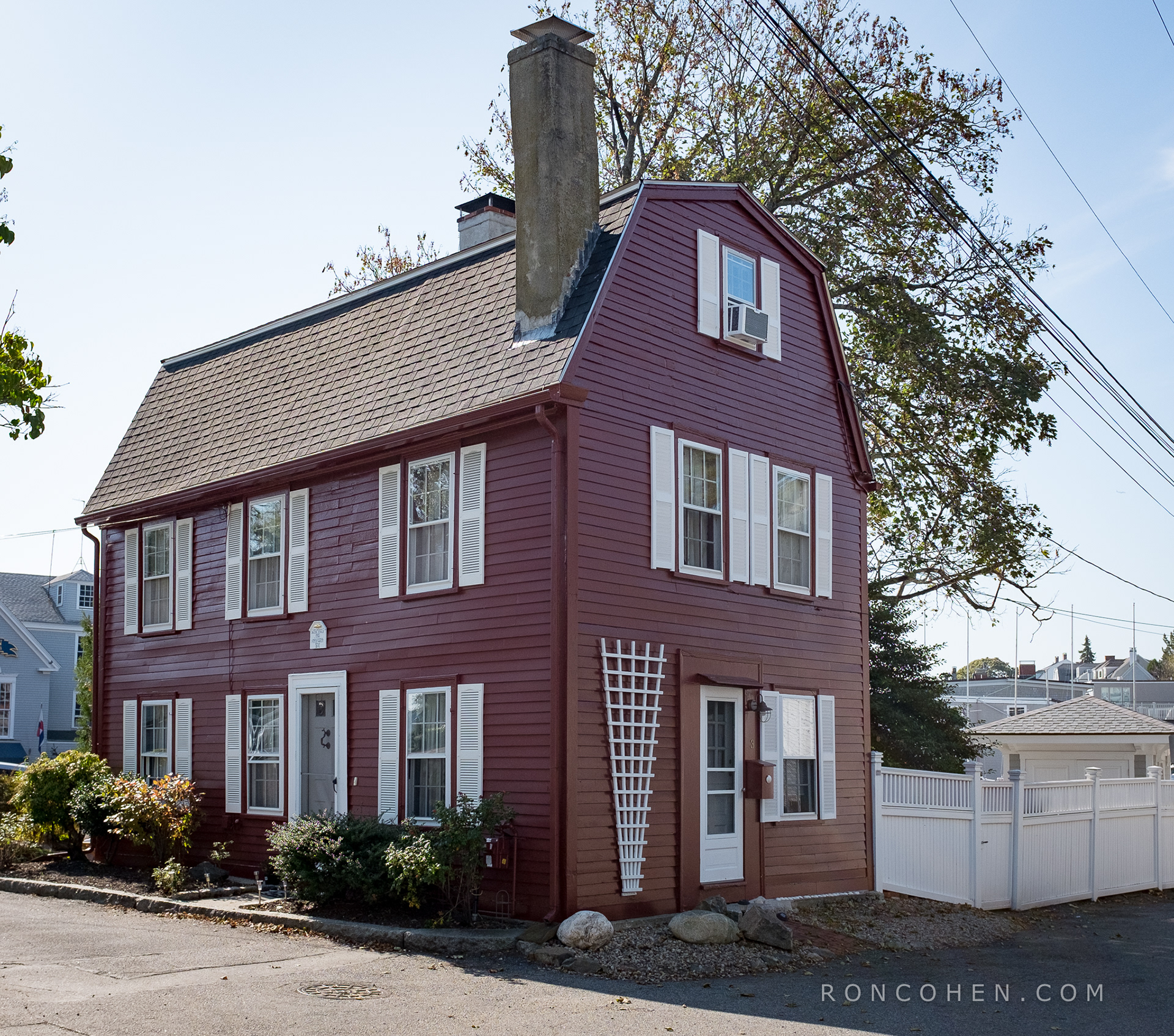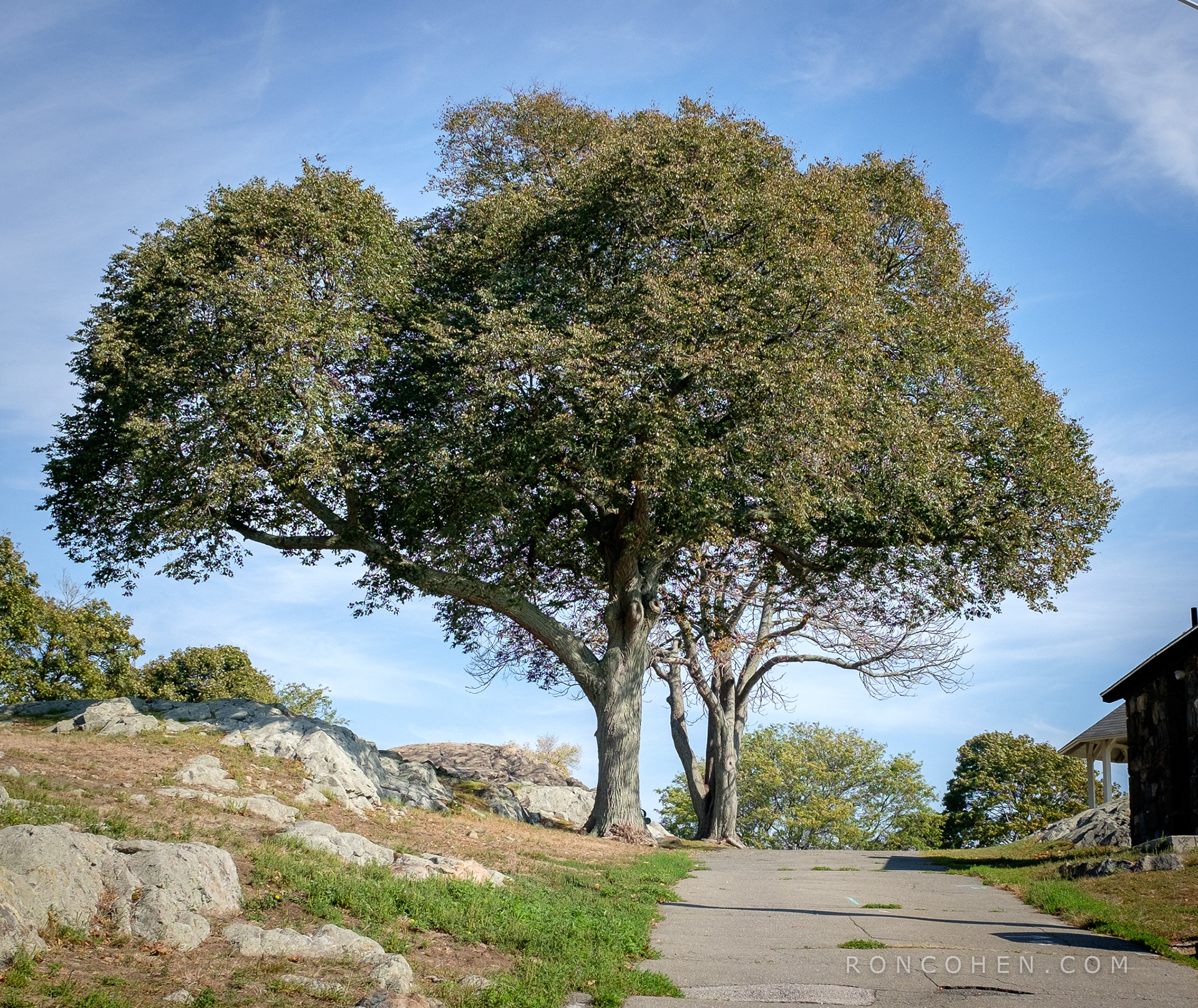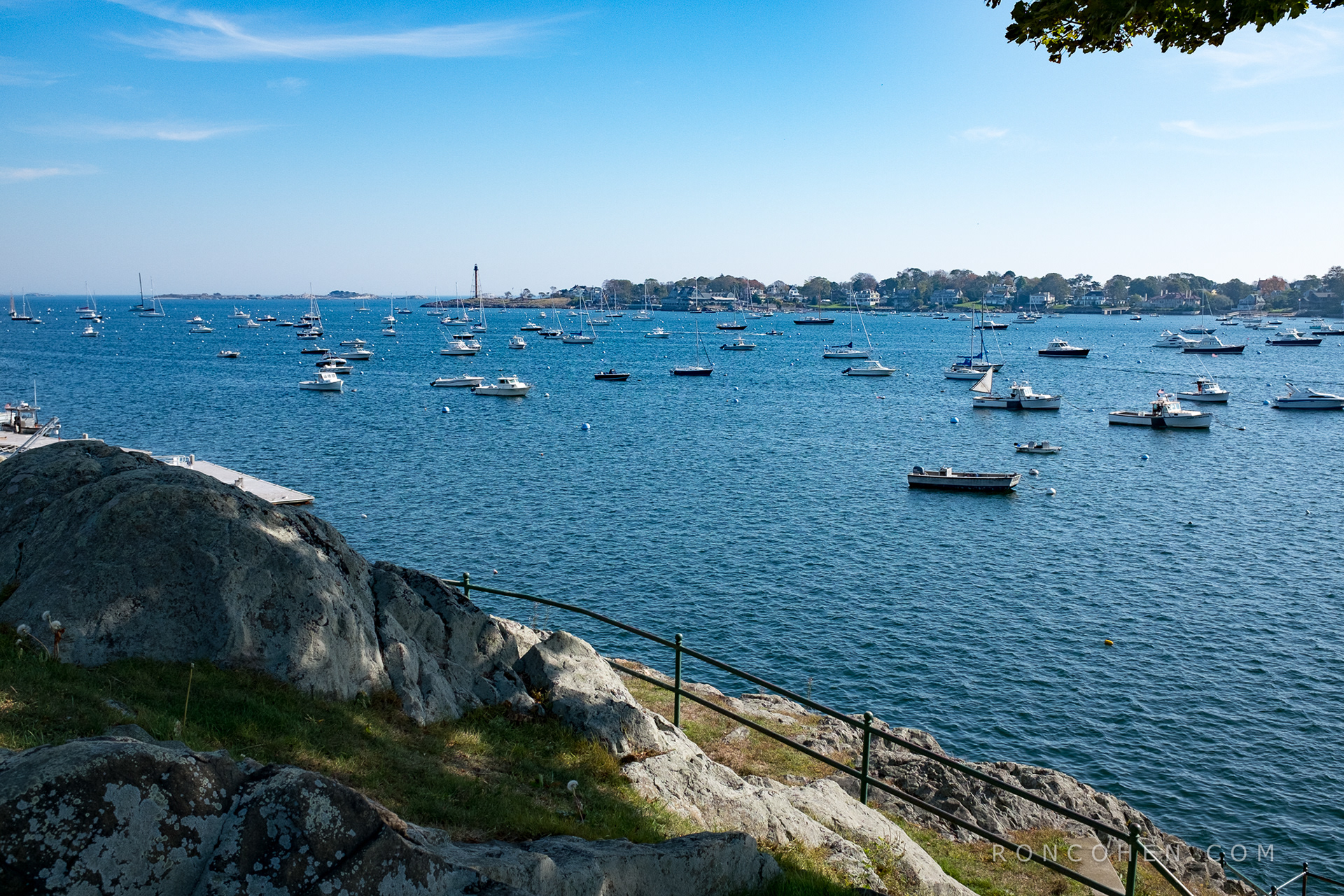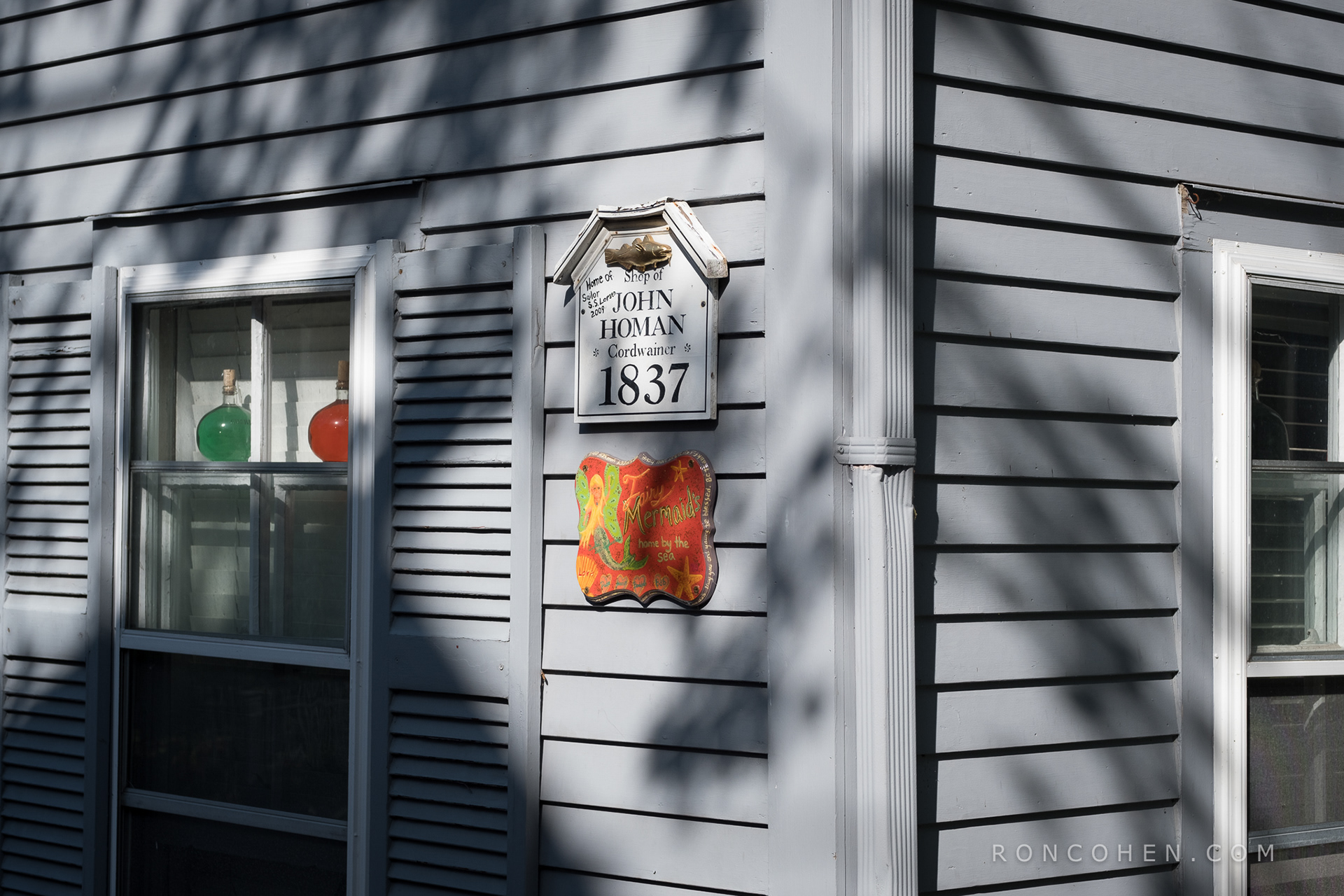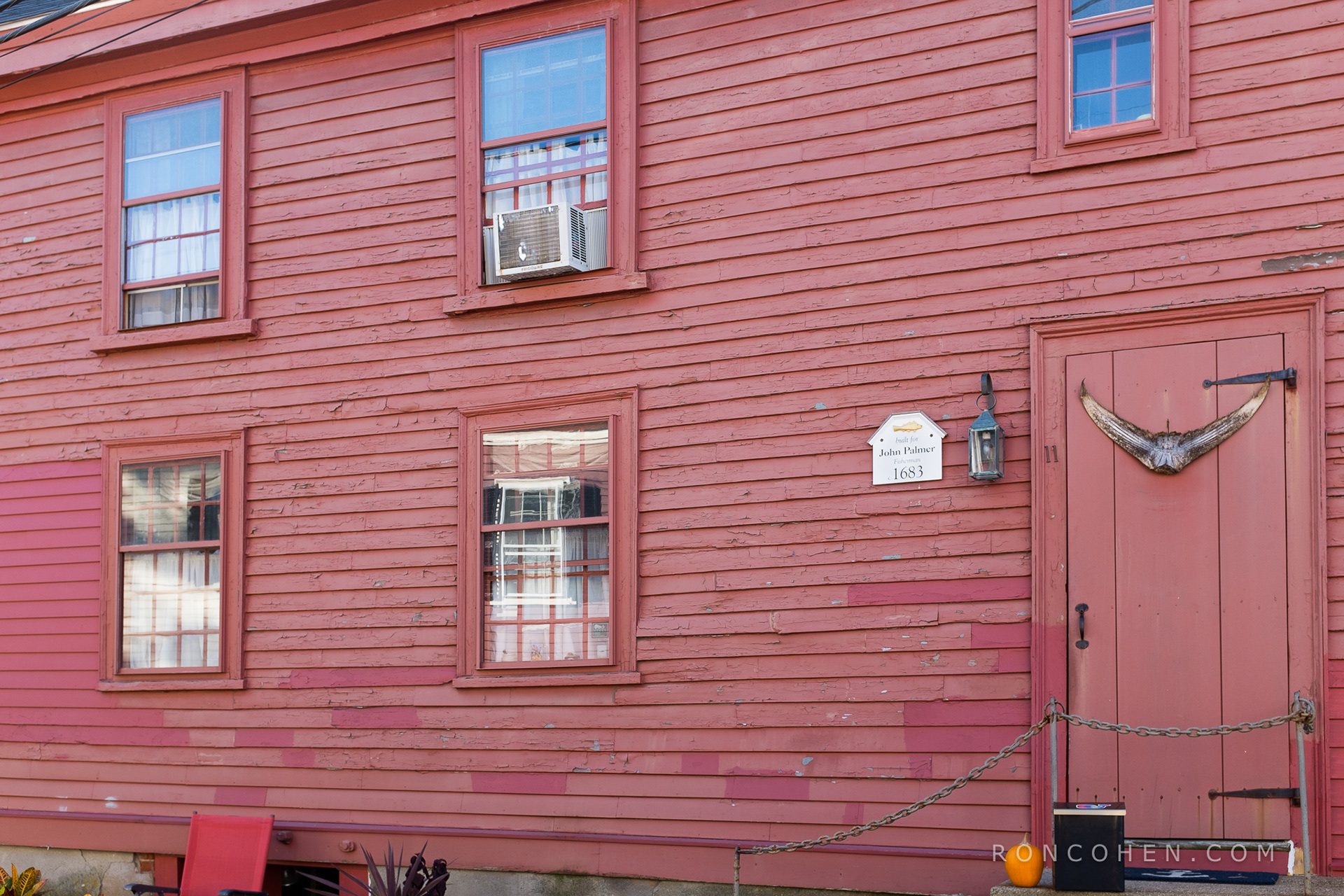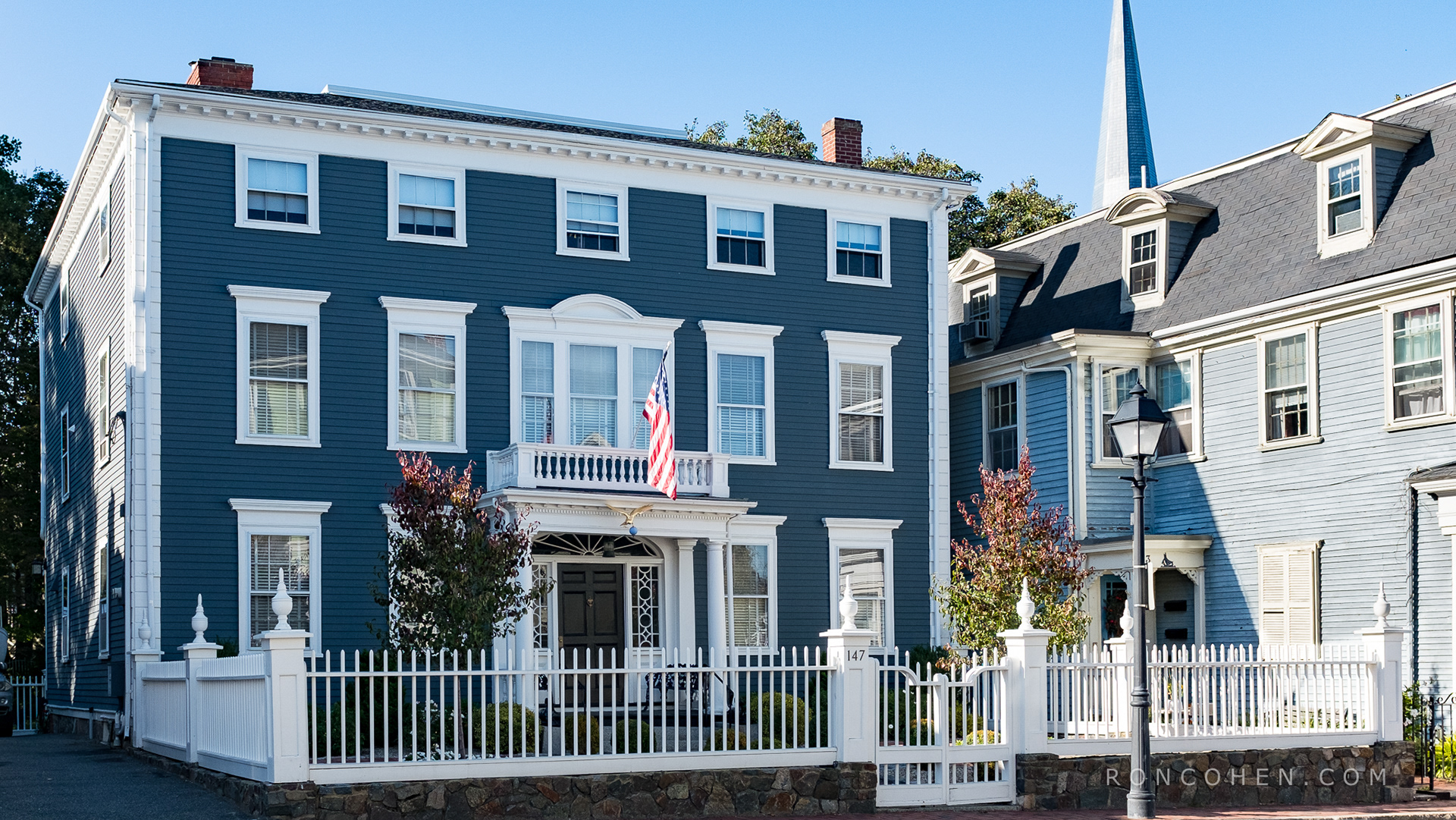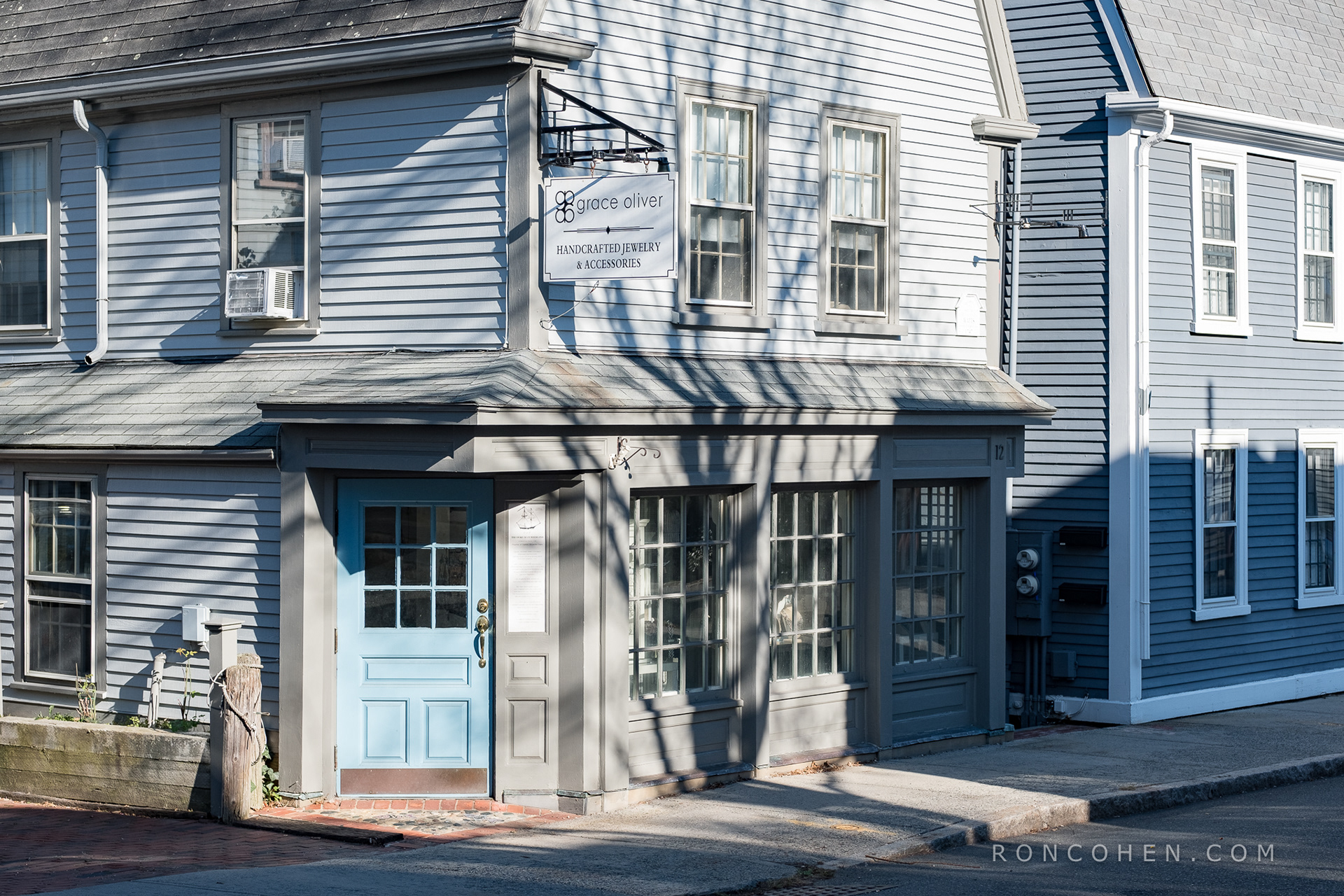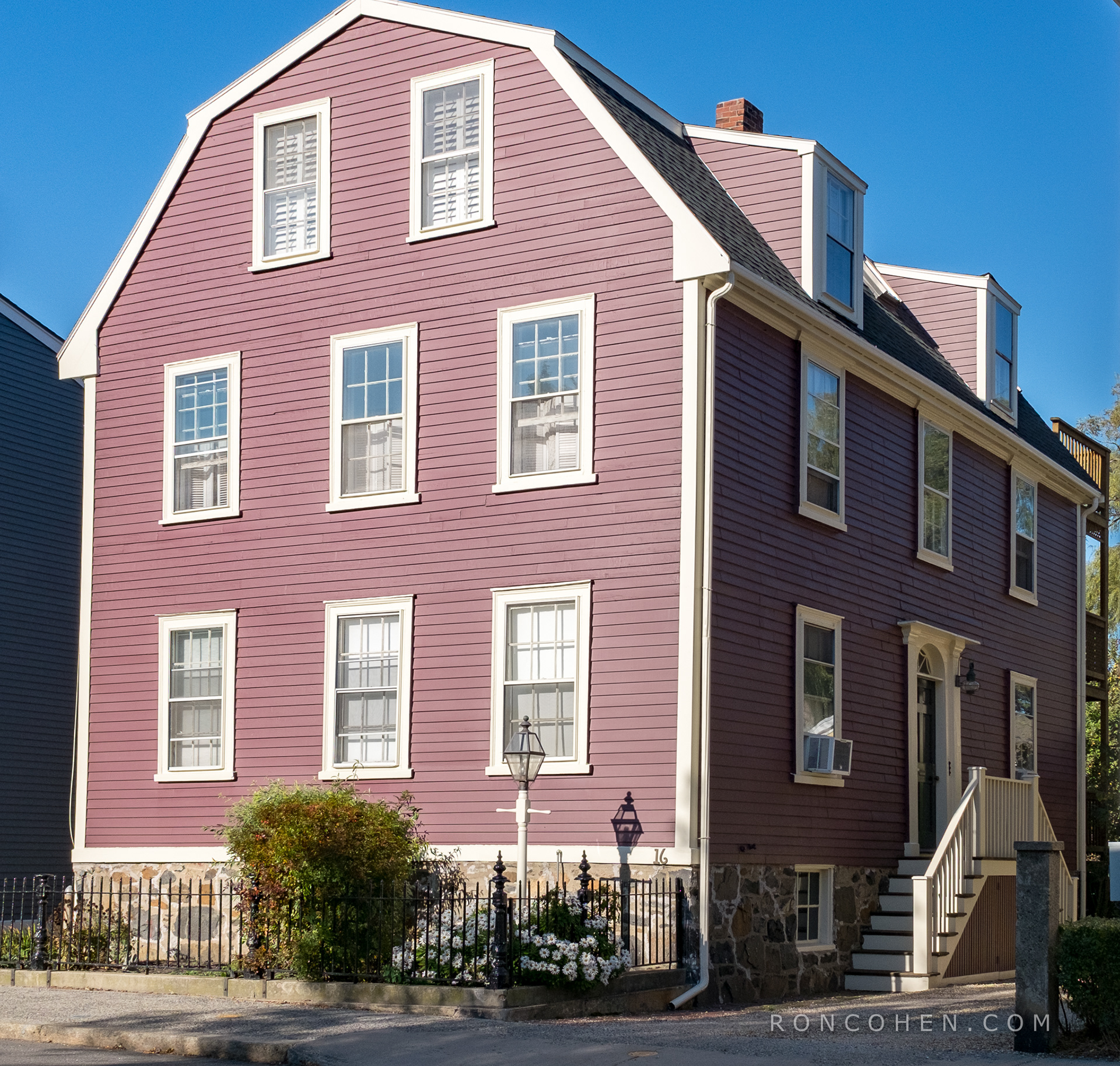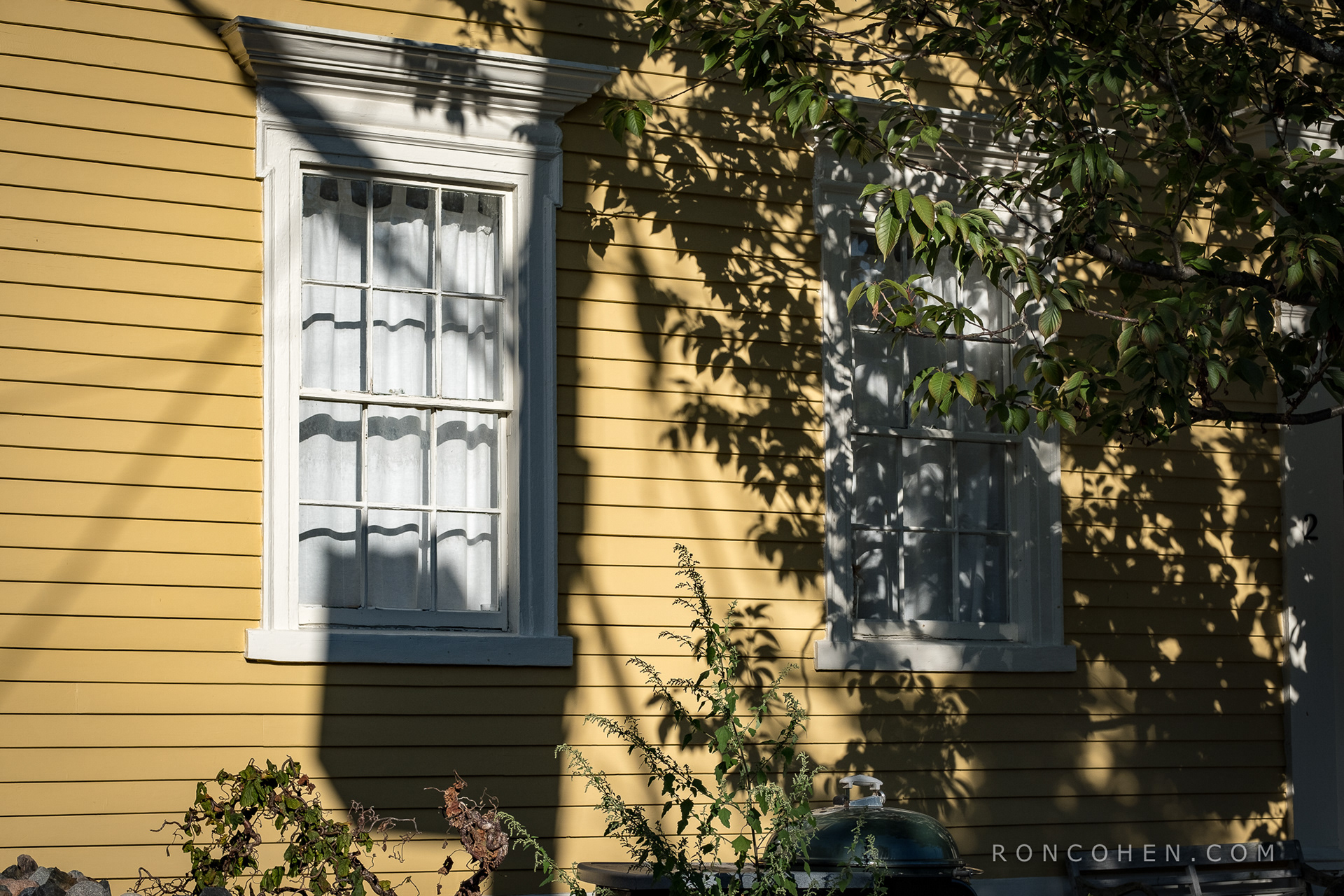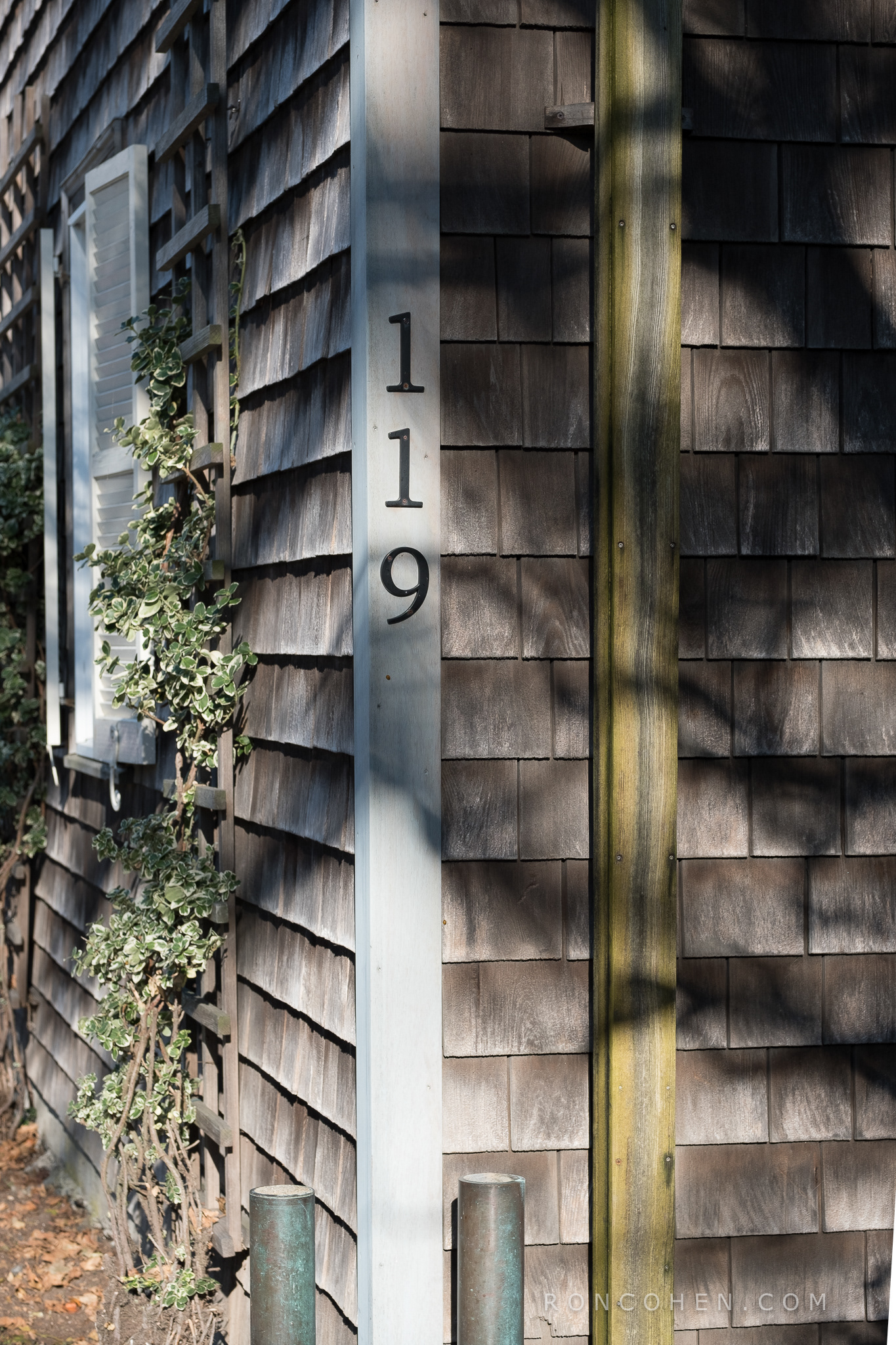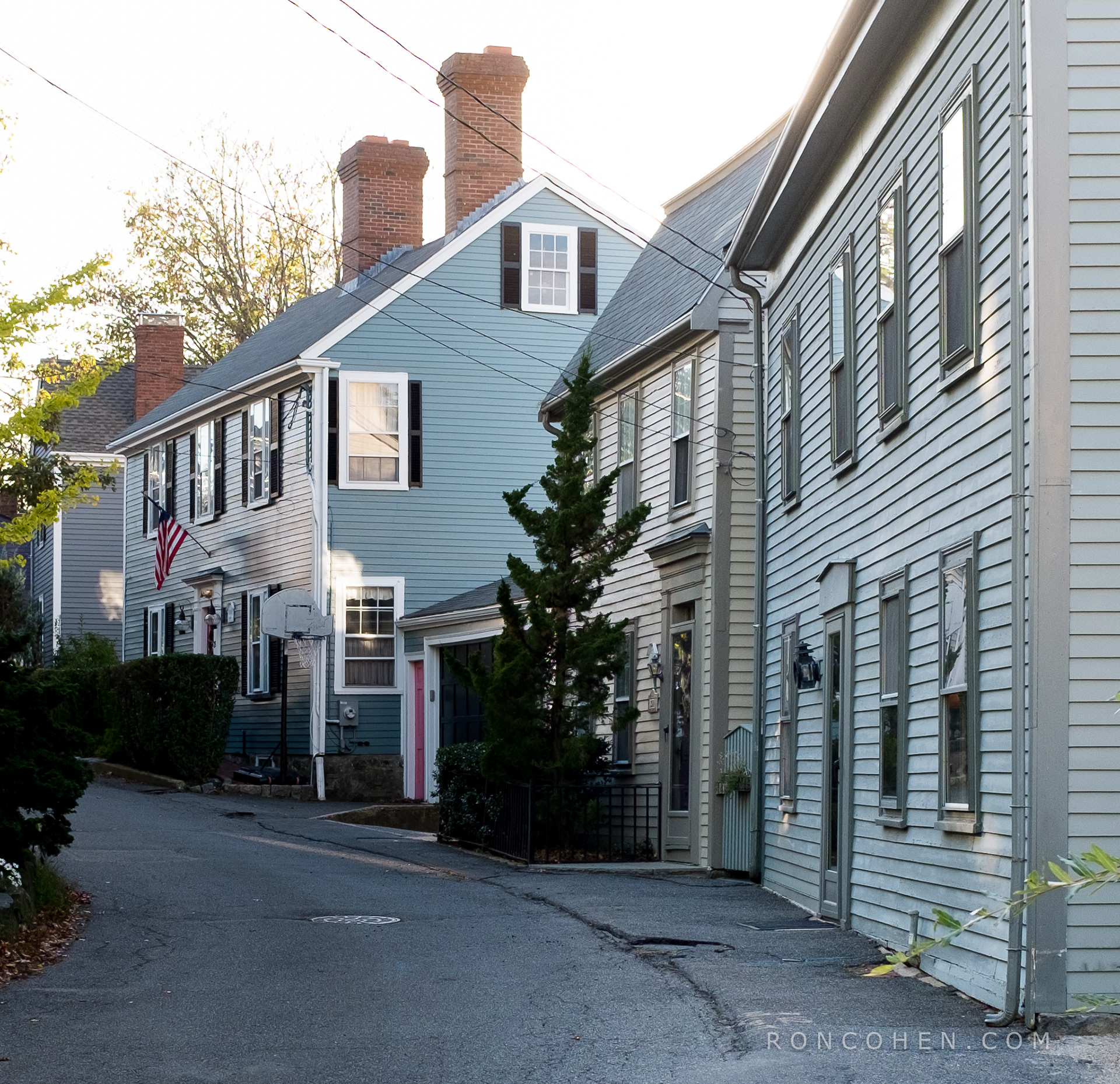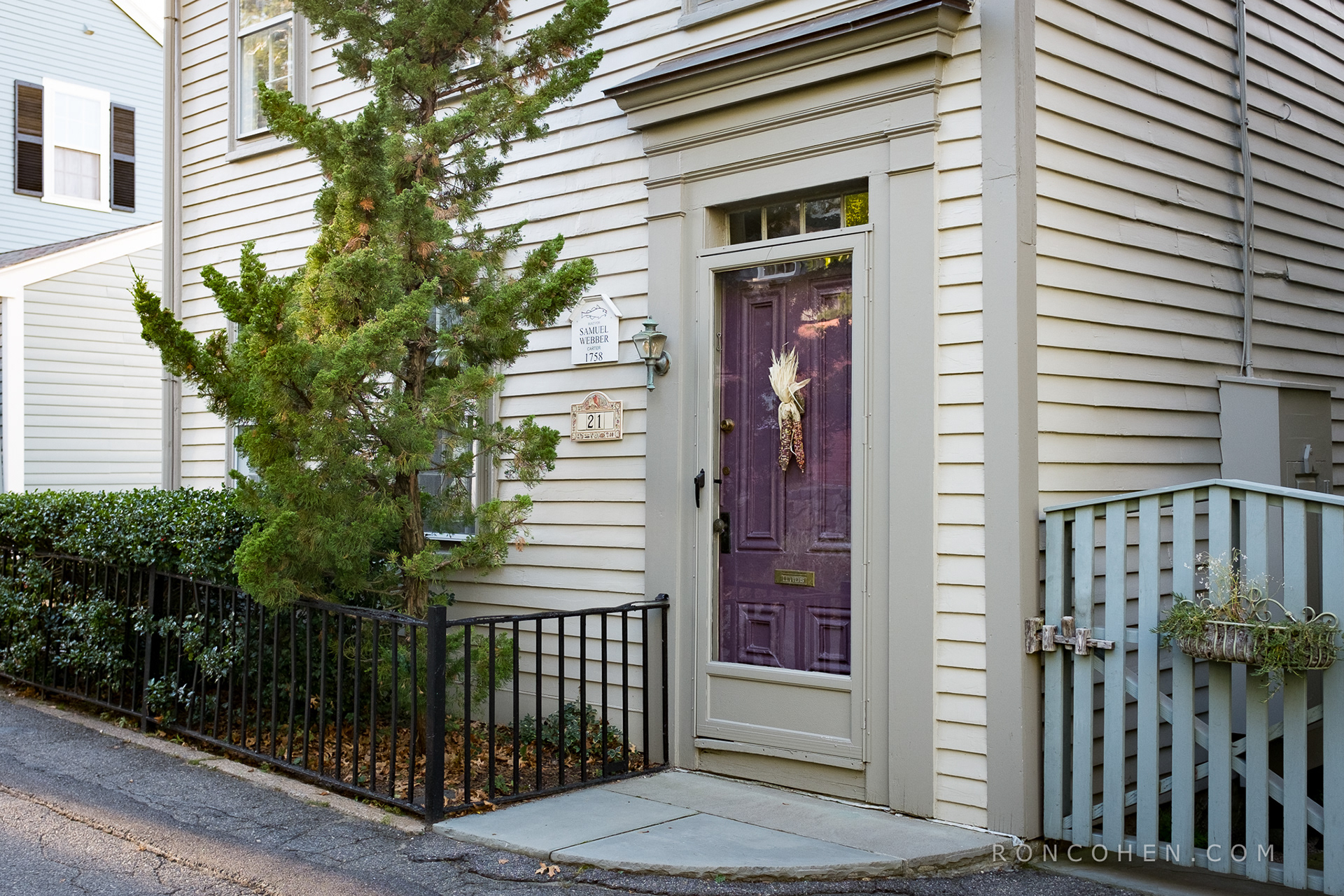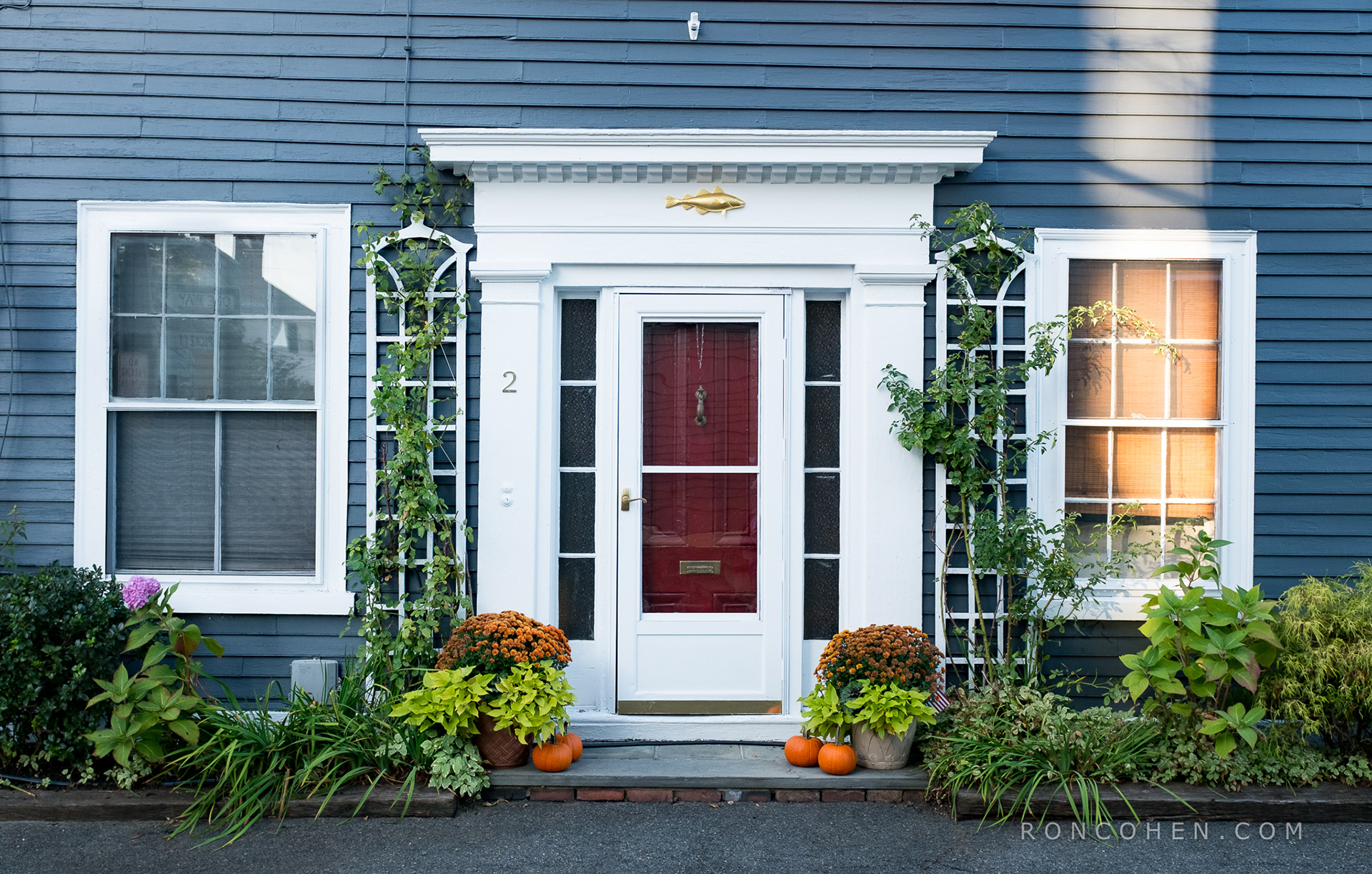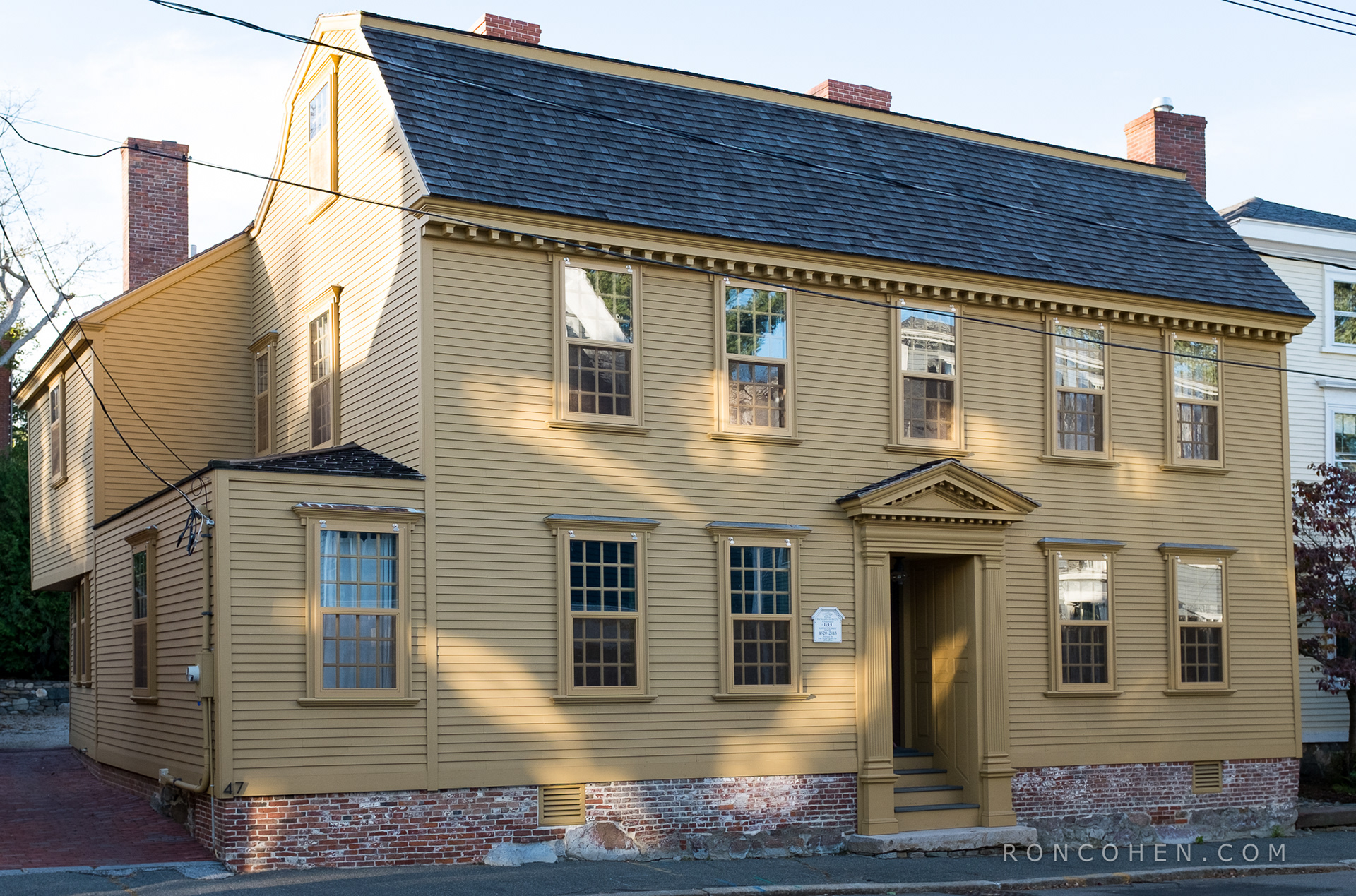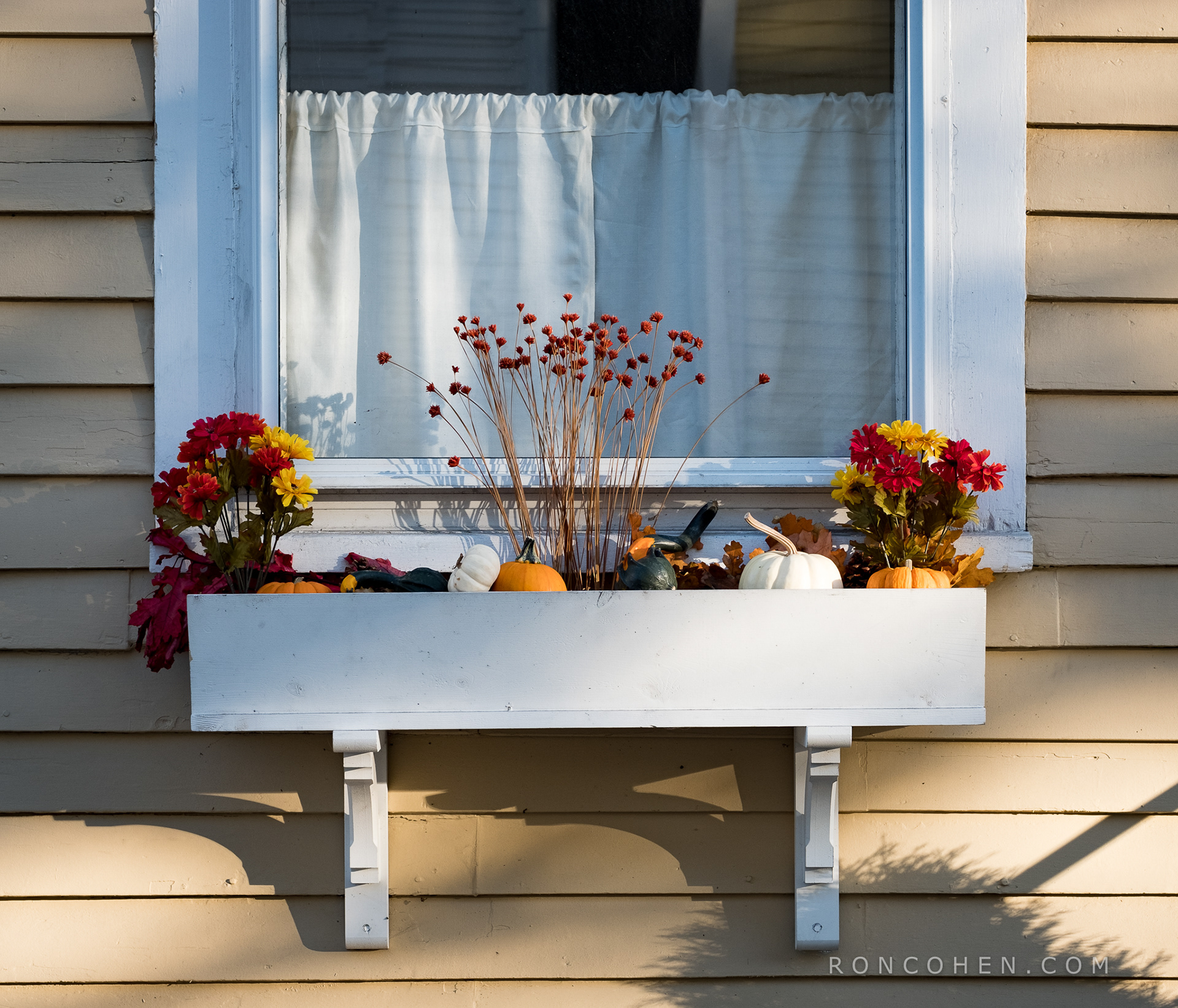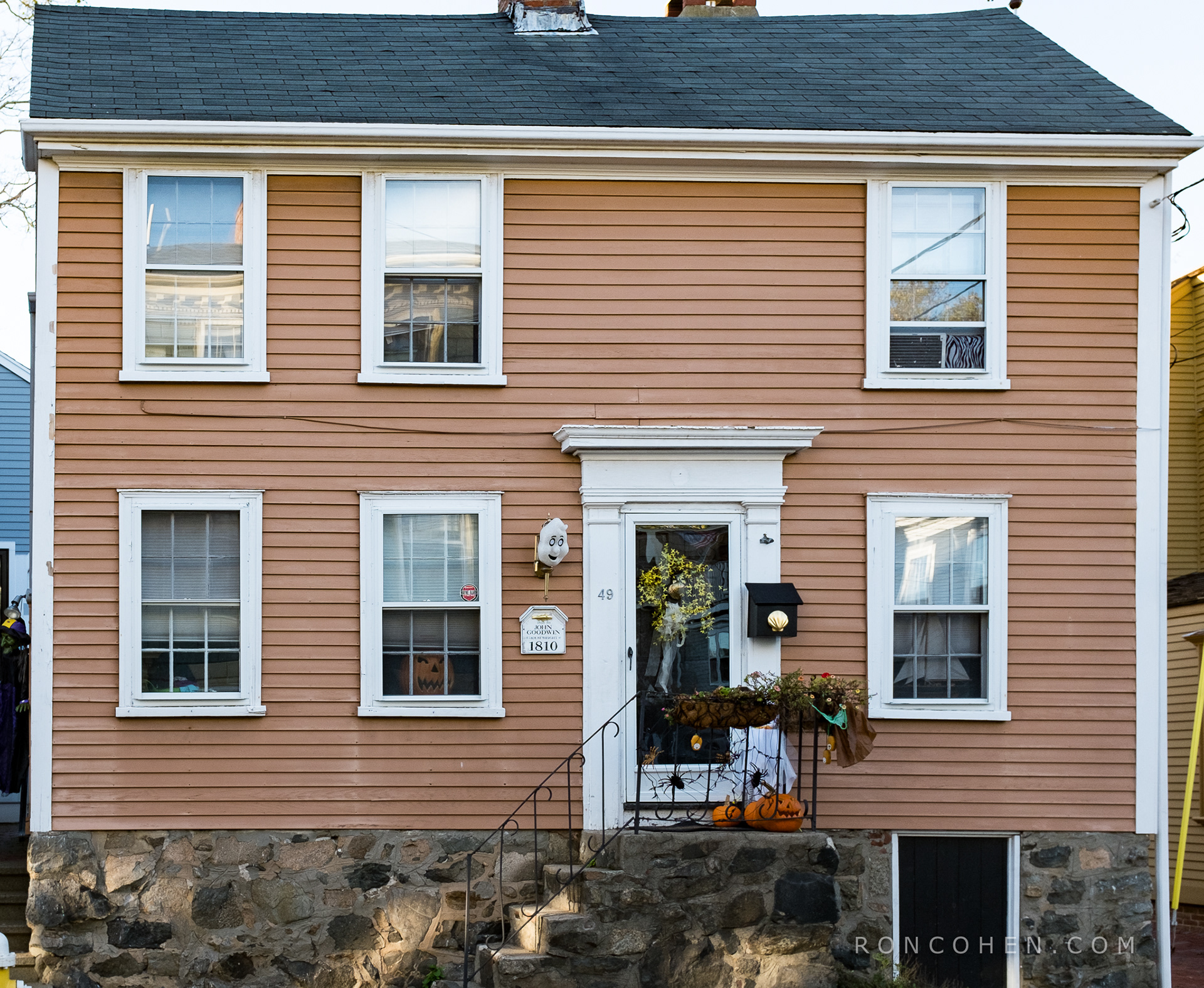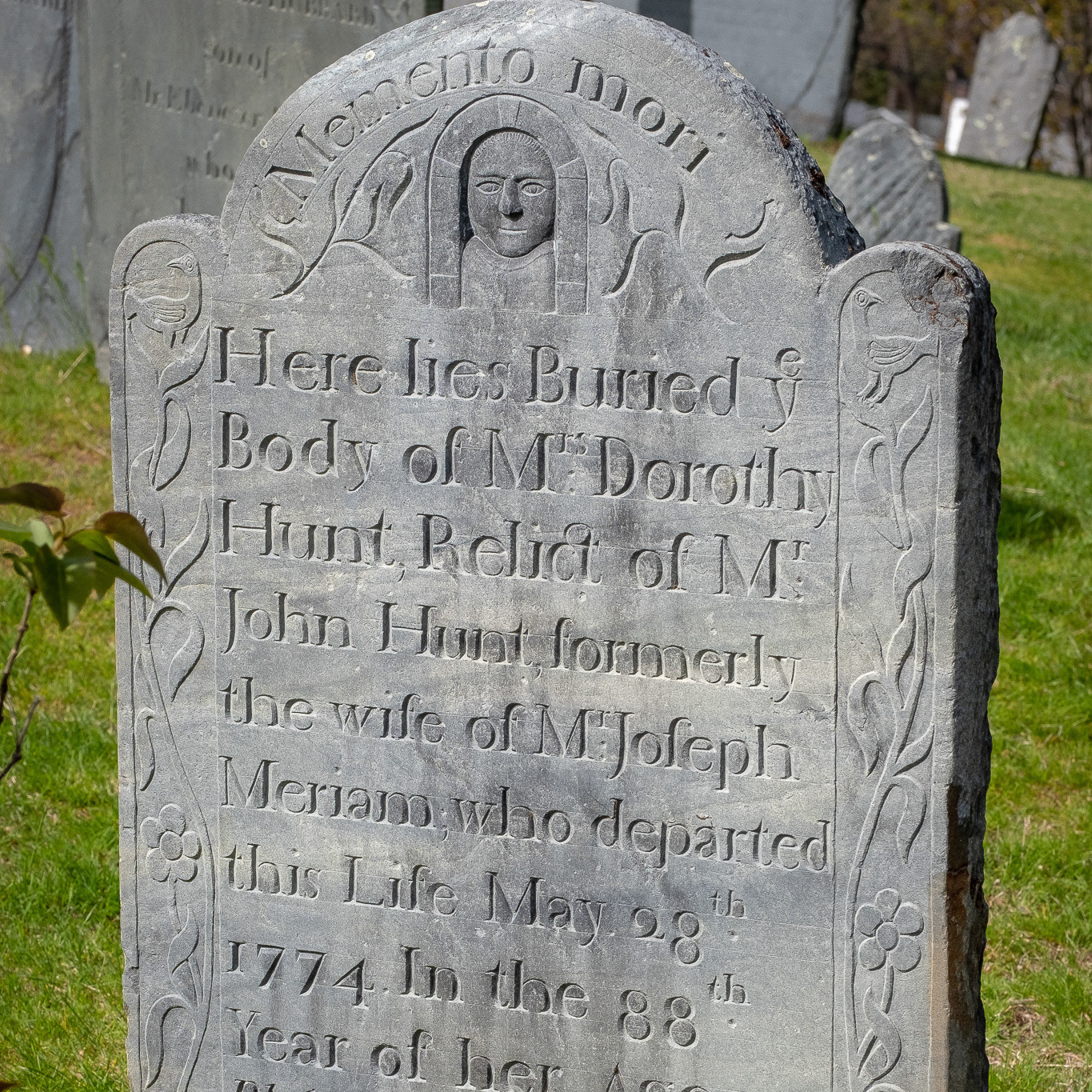Marblehead is a coastal town located about 16 miles northeast of Boston. It was founded in the early 1600’s, and became a major fishing port and shipyard for the next two centuries. Today, it is known for its yacht clubs, and its large collection of early American wood-frame houses. Most of the old houses are in superb condition, having been restored (at no small expense) for their owners to occupy. The majority are 18th Century Georgian in style, and range from humble to grand.
The town also boasts many examples from the earlier Colonial period, and the later Federal period. The first house shown, below (red with white shutters), although built in 1750, well into the Georgian era, is a good example of the late Colonial style. The eighth house, the large, squarish mansion, gray with white trim, reflects the Federal style, which came into vogue in the 1780’s, after the Revolution. Classical motifs were applied to the exterior. Interior spaces became more varied and graceful, some rounded or elliptical. The new style came to symbolize the optimistic spirit of the young republic.
The history of Marblehead is intertwined with the birth of the nation, as the following passage from Wikipedia eloquently attests:
A large percentage of residents became involved early in the Revolutionary War, and the sailors of Marblehead are generally recognized by scholars as forerunners of the United States Navy. The first vessel commissioned for the navy, Hannah, was equipped with cannons, rope, provision—and a crew from Marblehead. With their nautical backgrounds, soldiers from Marblehead under General John Glover were instrumental in the escape of the Continental Army after the Battle of Long Island. Marblehead men ferried George Washington across the Delaware River for his attack on Trenton. Many who set out for war, however, did not return, leaving the town with 459 widows and 865 orphaned children in a population of less than 5,000.
Following are a few photos from my recent visit, presented in the order taken.
Click any image to open slide show. Use keyboard arrows, or swipe, to move through slides:
